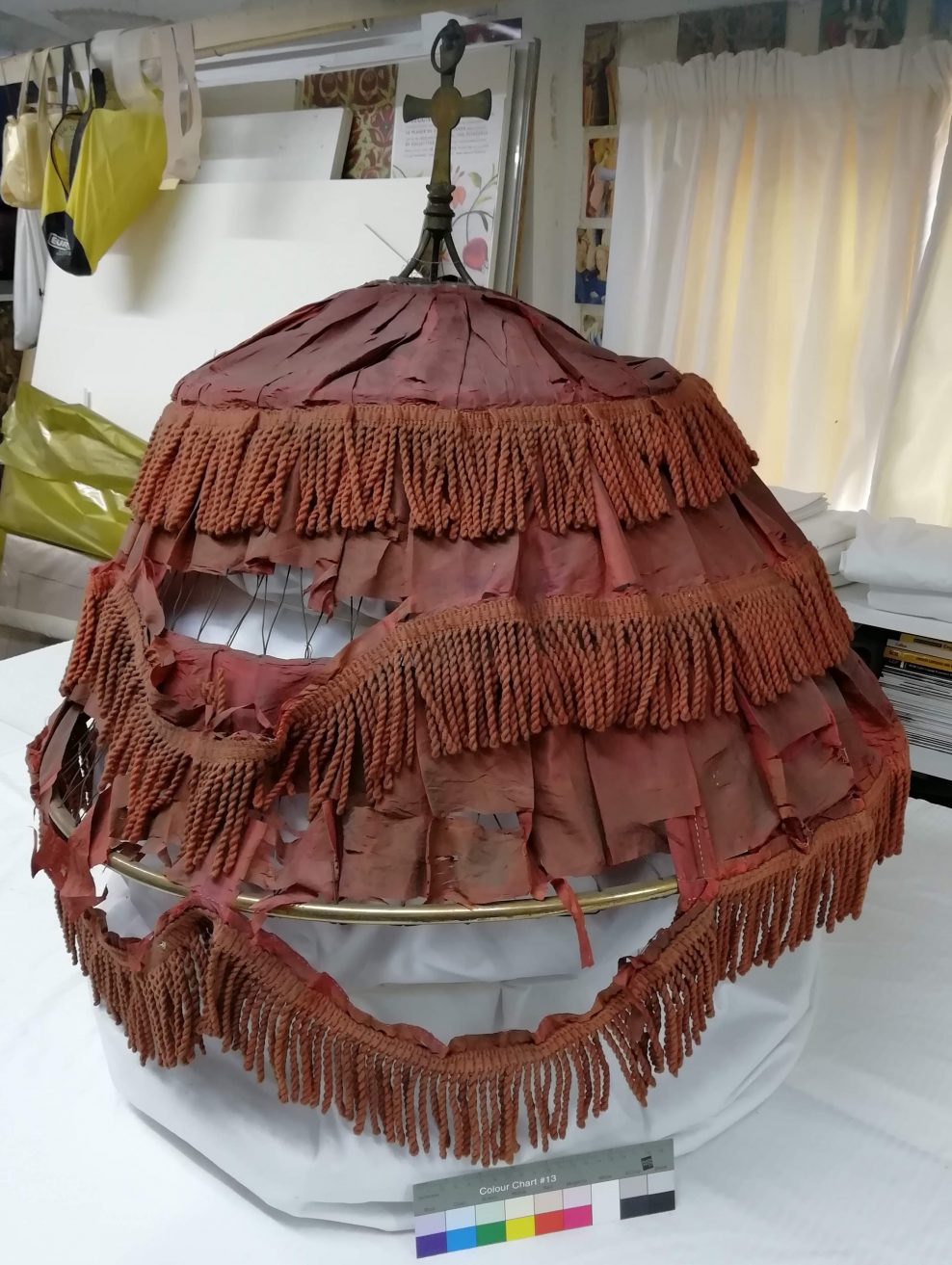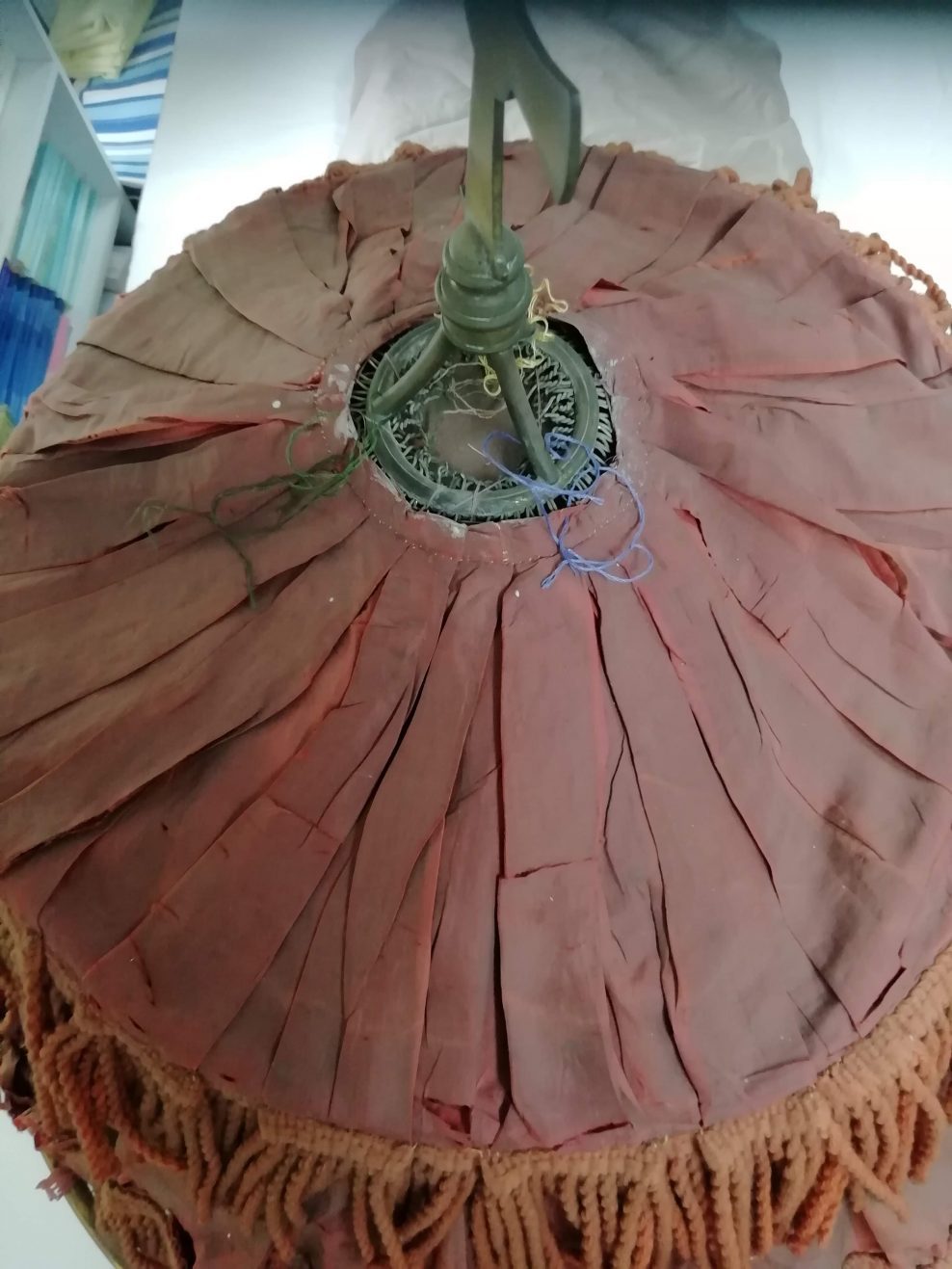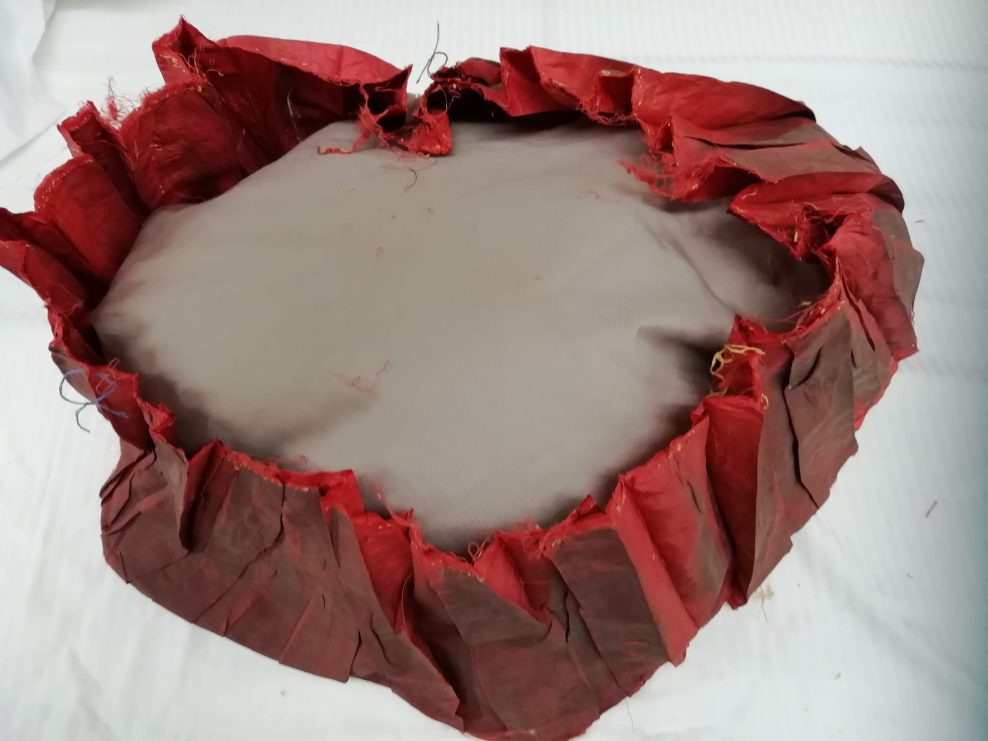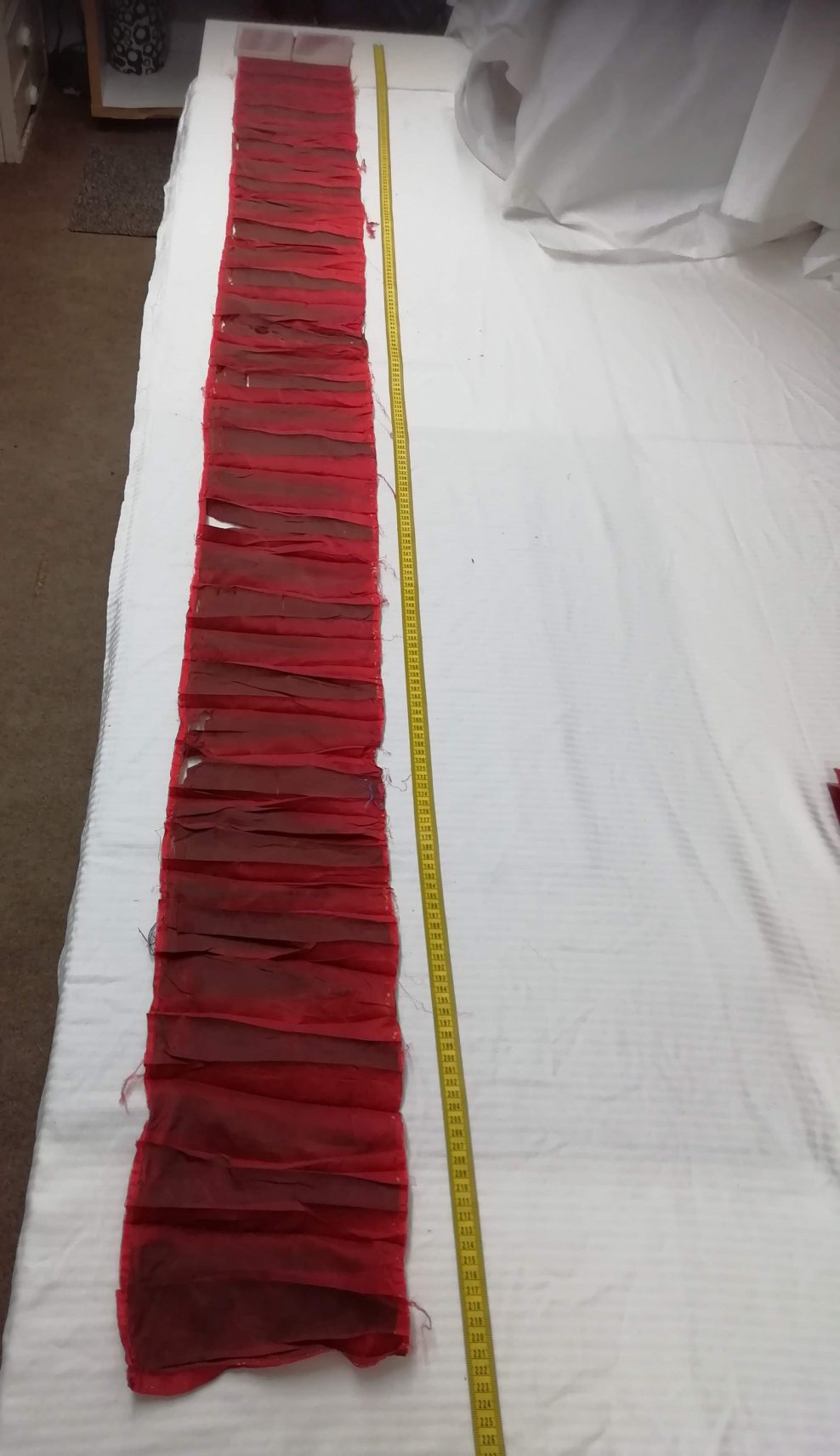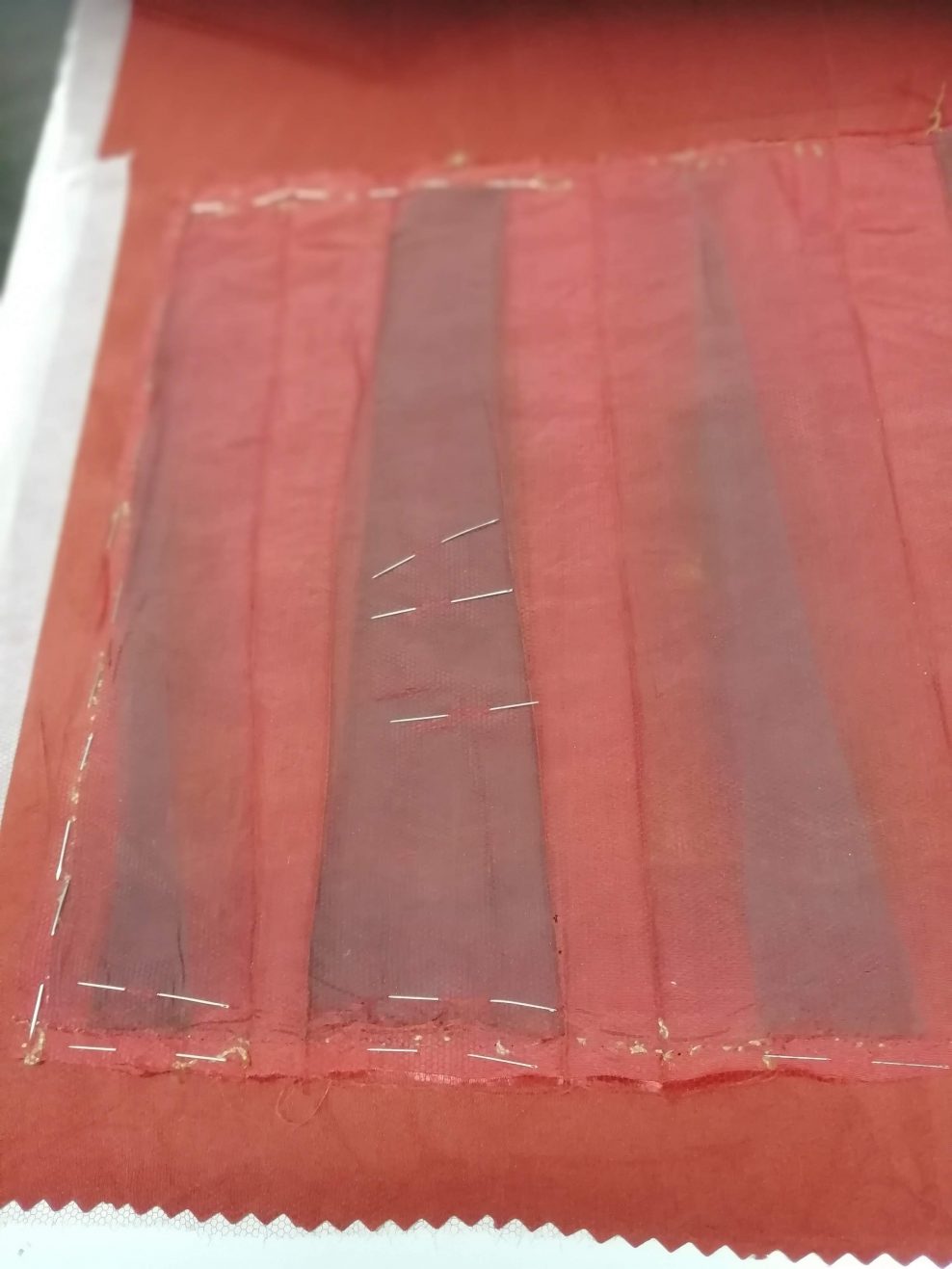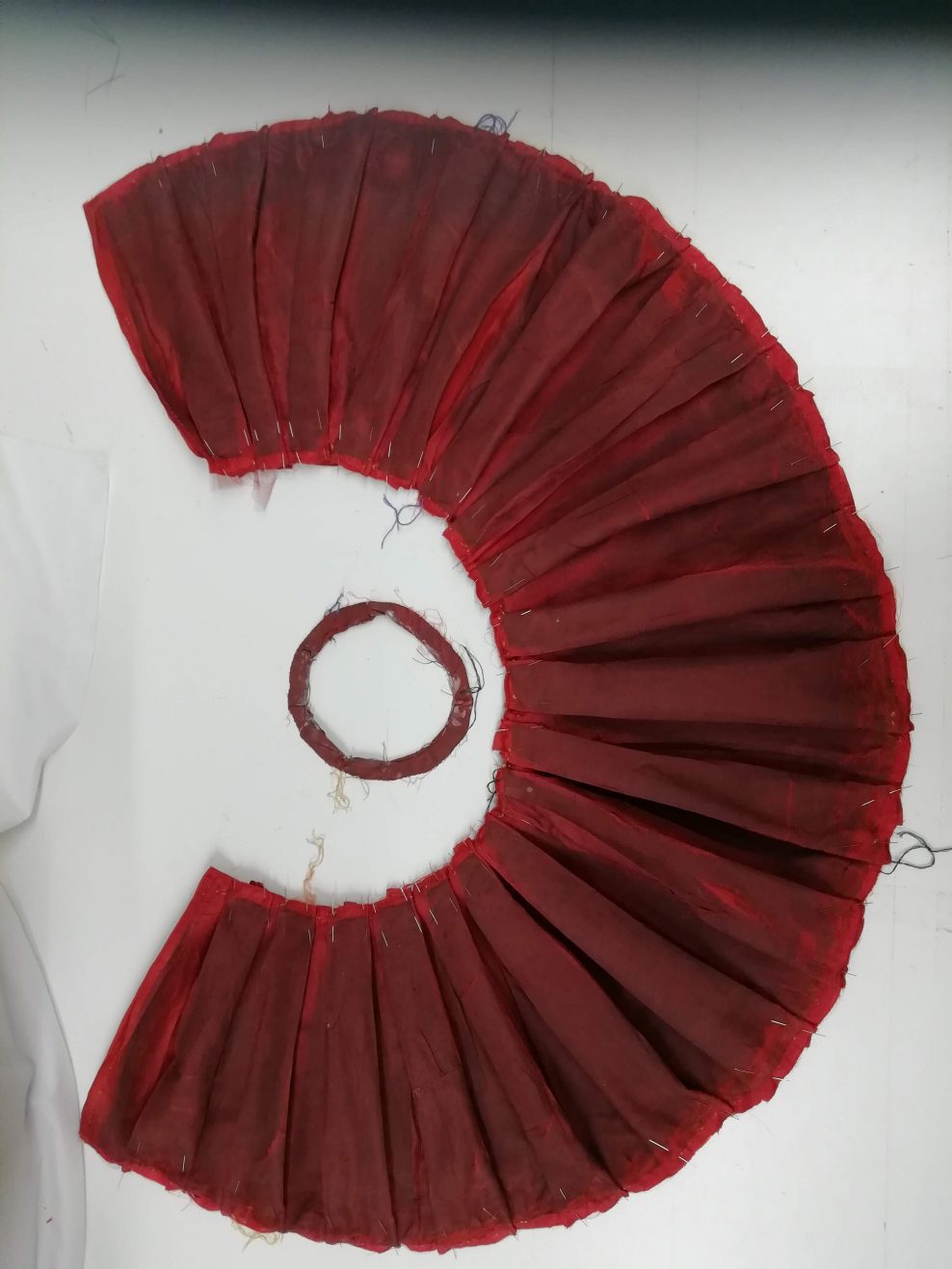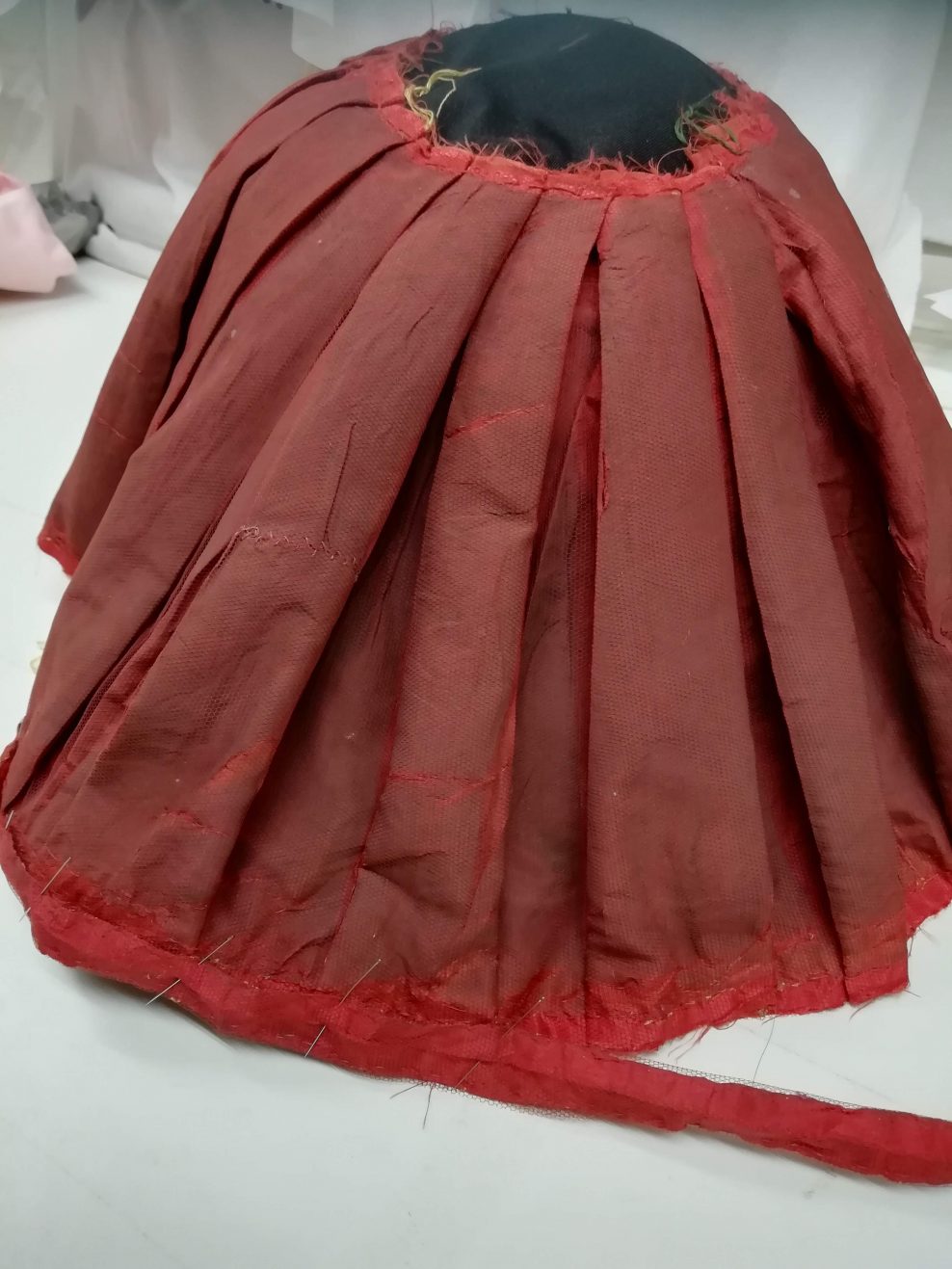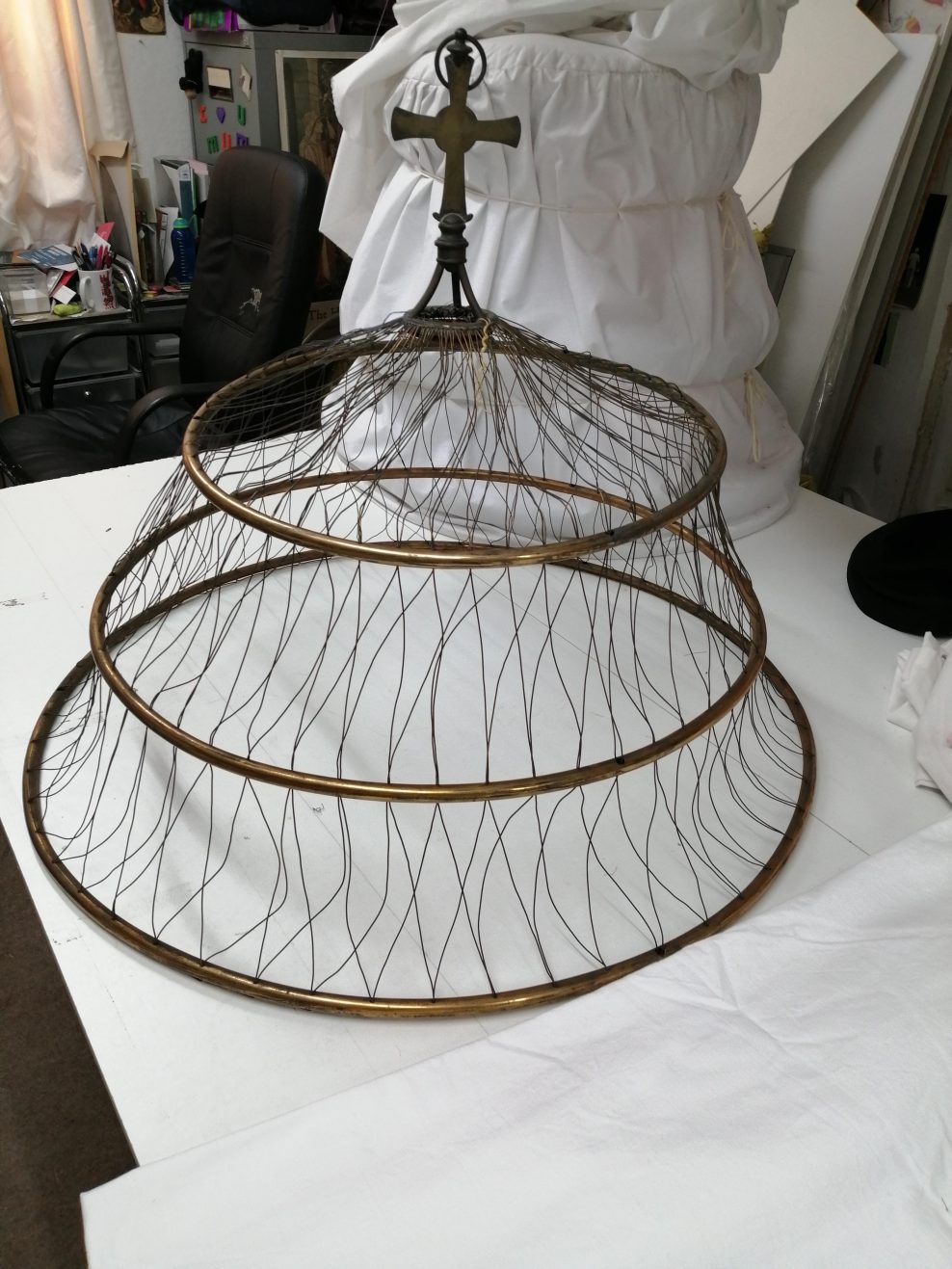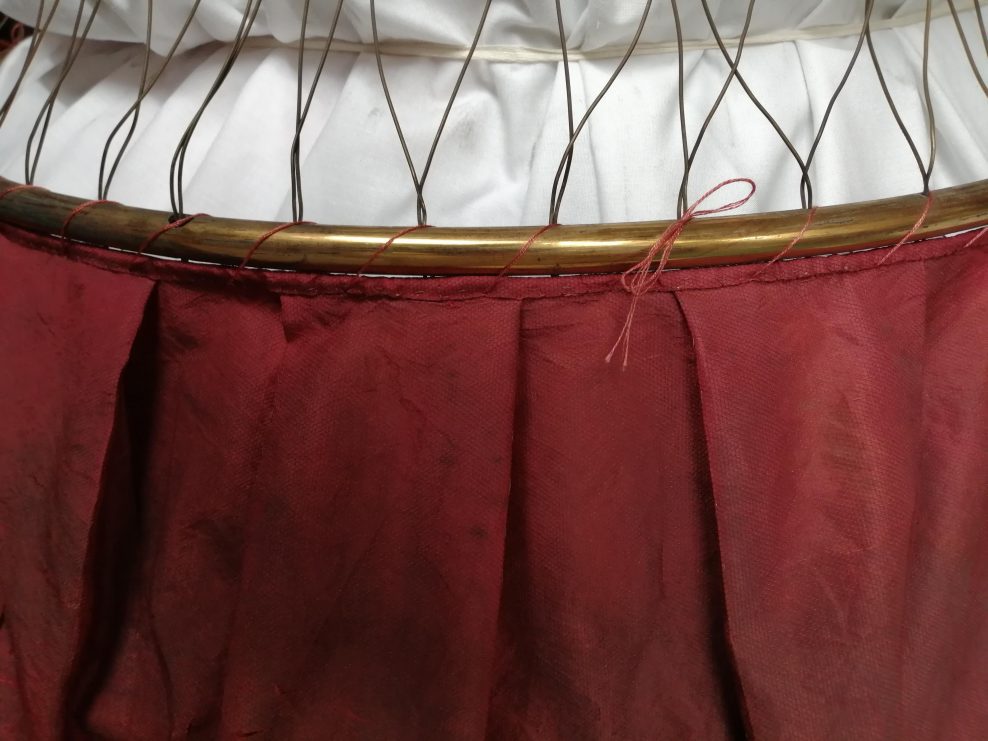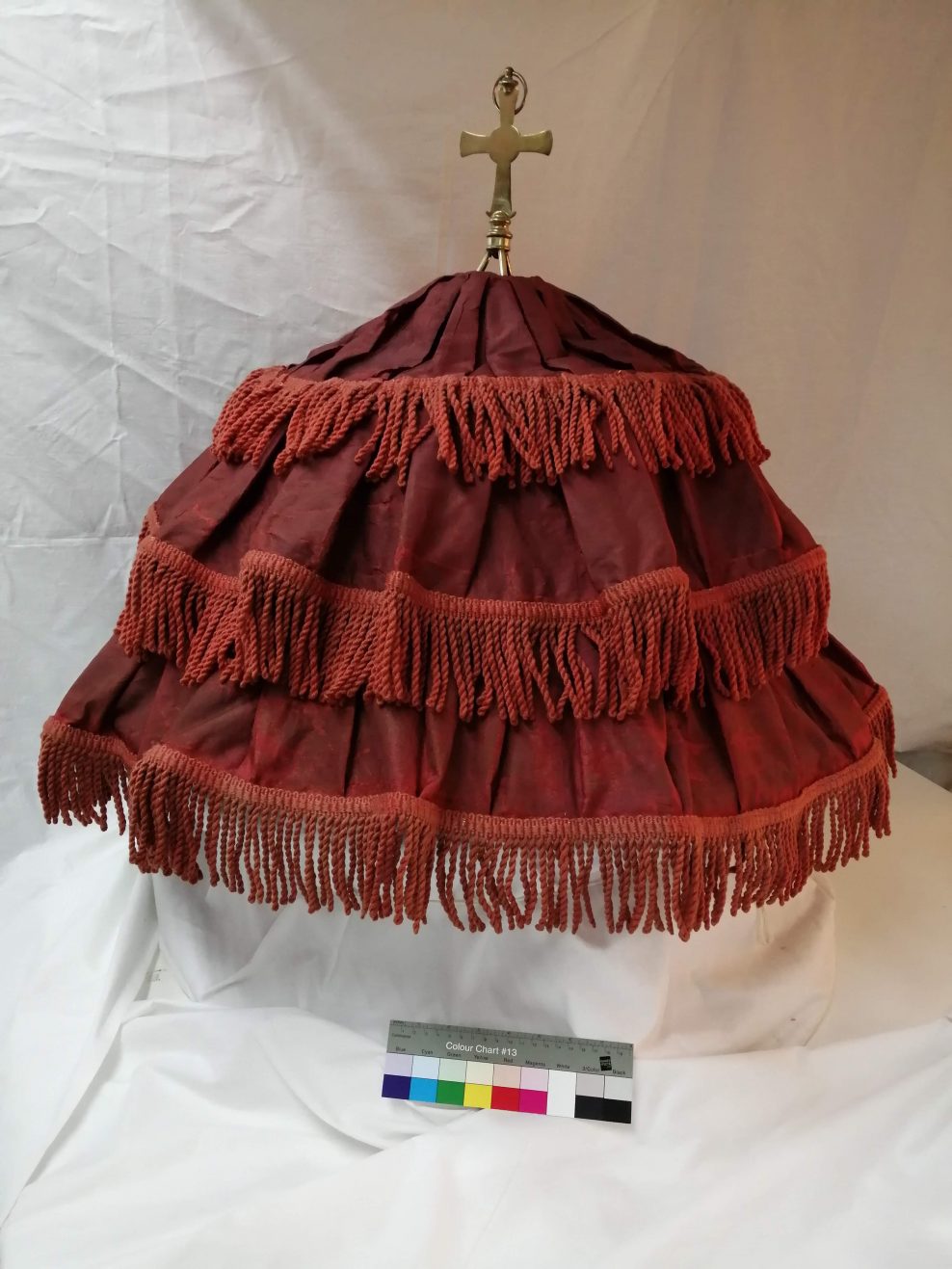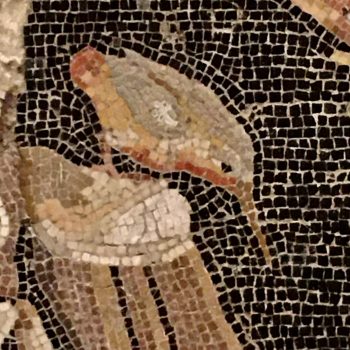Projects
Baldacchino from Cardinal Newman’s room, Birmingham Oratory
In 2020 an extensive project was undertaken to conserve the private library, archive and study of Cardinal Newman at Birmingham Oratory. Among the objects needing conservation was a baldacchino made from silk fabric and wool fringe on a brass frame, suspended from the ceiling of the study over the altar. A video detailing the Cardinal Newman project can be viewed at https://www.youtube.com/watch?v=-TLjnrJABnw – the baldacchino is shown at 7.40.
The baldacchino measures approximately 760 mm (30”) wide by 530 mm (21”) high. The armature of the baldacchino is formed from three brass rings connected to each other by brass wires. A brass cross is attached to the upper ring. The covering of the armature is made from three lengths of red plain weave silk fabric, gathered along the upper edge, and sewn to the brass rings. Each length of silk fabric is trimmed with a red wool fringe. A red silk fabric-covered disc closes the top of the baldacchino, which is suspended from the ceiling by wires attached to a ring at the top of the cross.
The baldacchino was in a fragile state. It was heavily surface soiled. The silk fabric was brittle; it was split and holed in many places. Some weak areas had been backed with new silk fabric. The heavy wool fringe had exacerbated the splitting of the silk fabric, partly on account of its weight and partly because the sulphur component of the wool molecule acts as a catalyst for the breakdown of silk. Some portions of the fringe were attached to the silk fabric with metal staples and safety pins. The brass armature appeared to be sound.
The brief was to clean and conserve the baldacchino for continued display in Cardinal Newman’s study, once the exterior and interior conservation was complete.
Dismantling
The baldacchino was transported to the conservation workshop resting on a bespoke shaped soft fabric-covered support.
The positions of the silk panels on the frame and the fringes on the panels were marked with coloured threads to facilitate reassembly after conservation.
Stitches holding the silk fabric tiers to the frame were clipped and the fabric was removed.
The wool fringes were detached from the silk fabric. The binding strips of silk fabric were separated from the silk fabric panels. The stitches holding the fabric in pleats were clipped and the panels were laid out flat. The repair silk fabric was removed. It was not reused during conservation as it was providing little support and it was not a good colour match for the original silk.
Cleaning
Both silk and wool elements were thoroughly surface cleaned with low-powered vacuum suction to remove loose, particulate soiling.
The wool fringes were wet cleaned in softened water and a synthetic anionic detergent with a neutral pH, with a final rinse of deionised water.
The brass cross and its hanging ring were cleaned with a brass anti-tarnish cleaning and polishing cloth, as were the wires running between the graduated brass rings. The brass rings were wiped with a damp cloth to remove surface soiling. Further cleaning was not undertaken as the rings had been coated with lacquer, which remained intact and had done a good job of holding tarnish at bay.
Supporting
Each length of original silk fabric was backed with a length of new plain weave silk fabric, dyed to tone with the original. A layer of fine gauge nylon net, again dyed to tone with the original silk fabric, was laid over the original silk. Running stitches worked in fine dyed polyester thread were worked between the cracks in the original silk fabric, the stitches passing through the new silk and the nylon net alone, holding the fragile original silk in place while not causing more damage by stitching through it.
Reassembly
The conserved fabric lengths were re-gathered into their pleats and the binding strips of silk fabric were re-sewn in place.
A length of 9 mm wide dyed polyester rep woven tape was sewn along the inner face of the fringes’ heading tape to act as a barrier between the silk and wool layers.
The fringes were re-sewn to the conserved silk panels.
The conserved tiers of fabric were re-positioned on the brass frame. They were re-sewn in place onto the brass rings.
